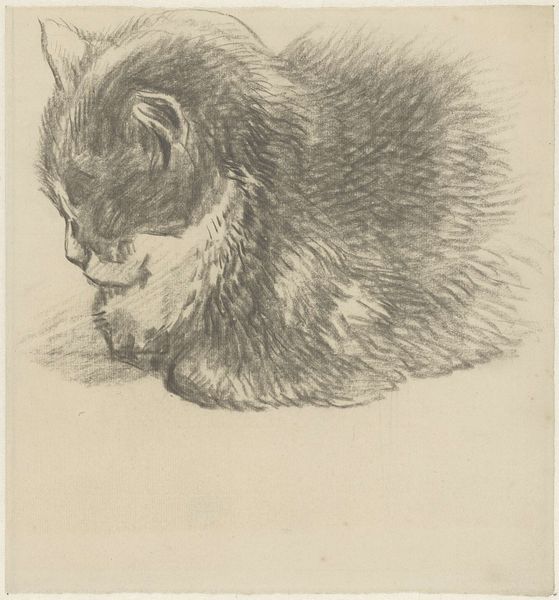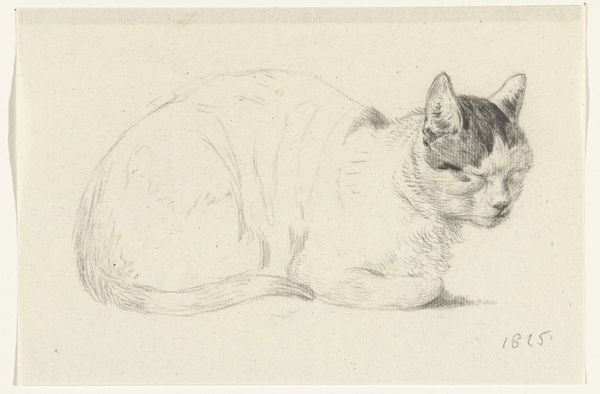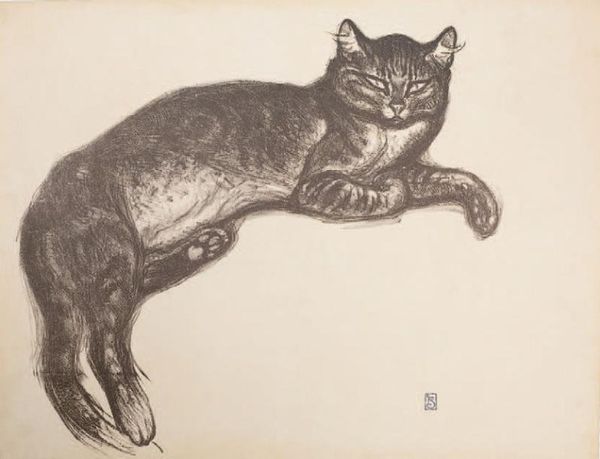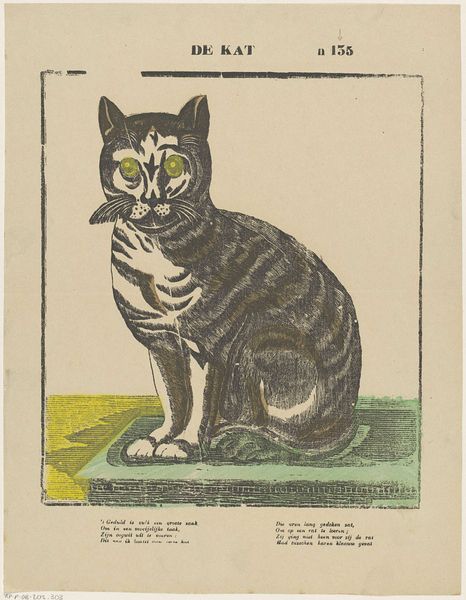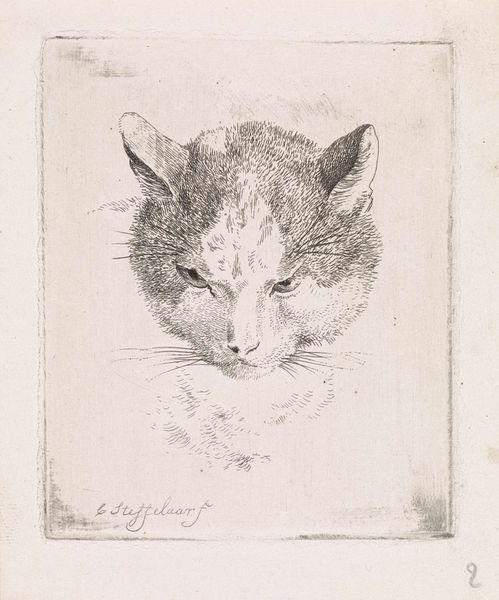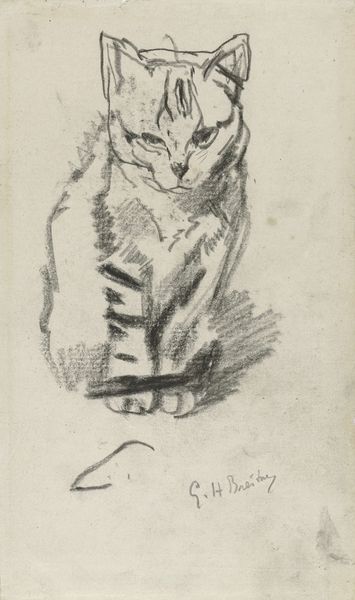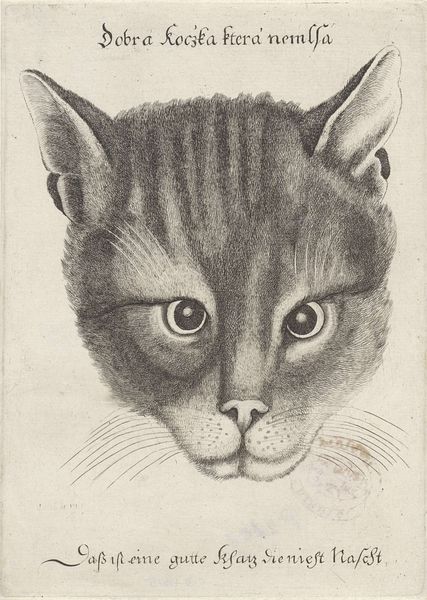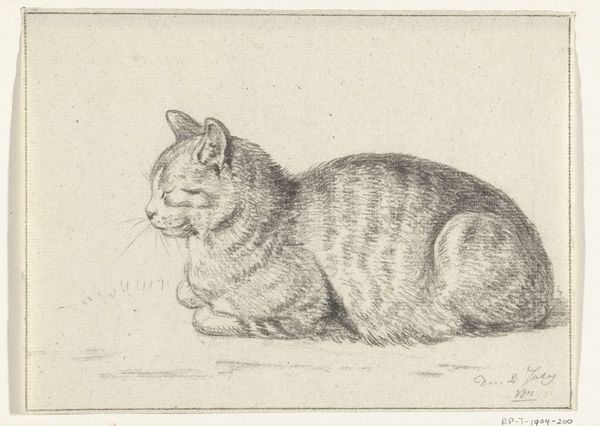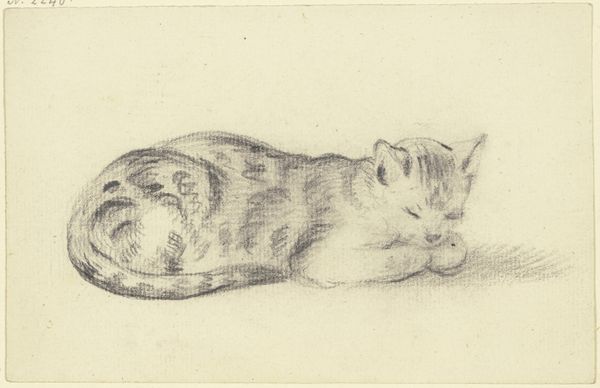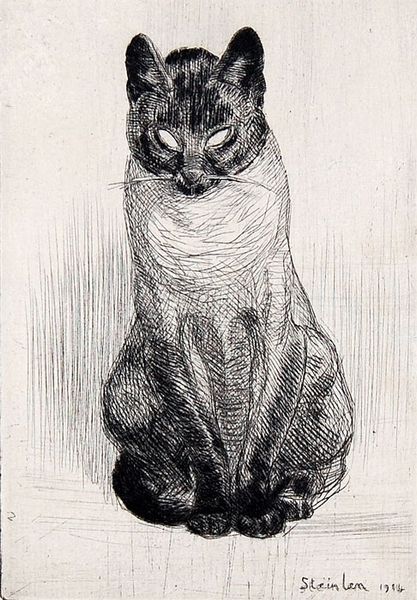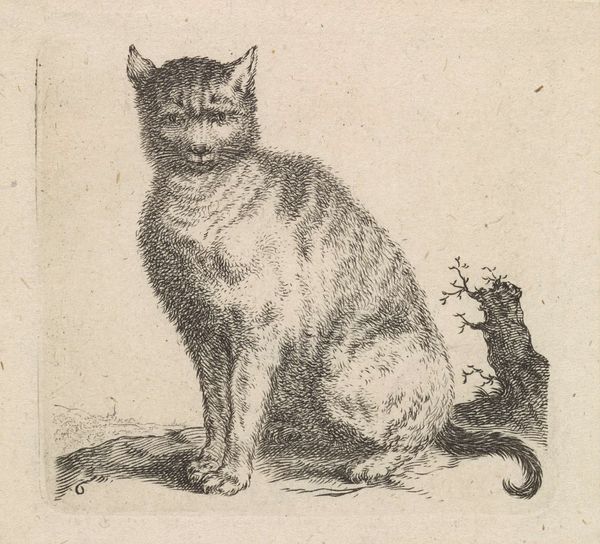
drawing, print, etching, ink
#
portrait
#
drawing
#
cubism
#
ink drawing
# print
#
etching
#
figuration
#
ink
Dimensions: sheet: 36 x 27.7 cm (14 3/16 x 10 7/8 in.)
Copyright: National Gallery of Art: CC0 1.0
Editor: This is Picasso’s "Le Chat", created between 1941 and 1942, using ink and etching. I'm struck by how raw and almost violently expressive it feels for a simple image of a cat. What aspects of the piece grab your attention? Curator: I'm drawn to the labor embedded in the etching process. Consider the physicality – the pressing of the plate, the resistance of the metal. The lines themselves are records of force. Does this handmade process heighten the sense of the animal's raw, instinctive nature, contrasted with the mass-produced feel of a printed work? Editor: That's interesting. It makes me think about how Picasso's cubist style almost deconstructs the cat into its constituent parts, emphasizing its physicality rather than its personality. How does that relate to the socio-economic context? Curator: Precisely. Consider the war years during which this piece was made. Scarcity, rationing… Picasso uses minimal material - ink - but renders a substantial form. There's a connection to the lived experience of making do, of transforming the humble into something monumental. Is it a portrait or a study in resourcefulness? Editor: I see your point! The "poor" materials emphasize resourcefulness amidst scarcity, especially when thinking about the artist's potential affluence at the time. Curator: Indeed. And etching, unlike painting, allows for reproduction and wider dissemination. How does that factor into the art's accessibility and its potential impact on a broader public grappling with similar constraints? Editor: It shifts the emphasis from unique artwork to reproducible object, more aligned with craft. Thanks, I didn’t think about it from a materialist perspective, it really sheds a new light on the piece. Curator: Exactly. Considering production, materiality, and socio-economic context gives us a deeper, richer understanding.
Comments
No comments
Be the first to comment and join the conversation on the ultimate creative platform.

